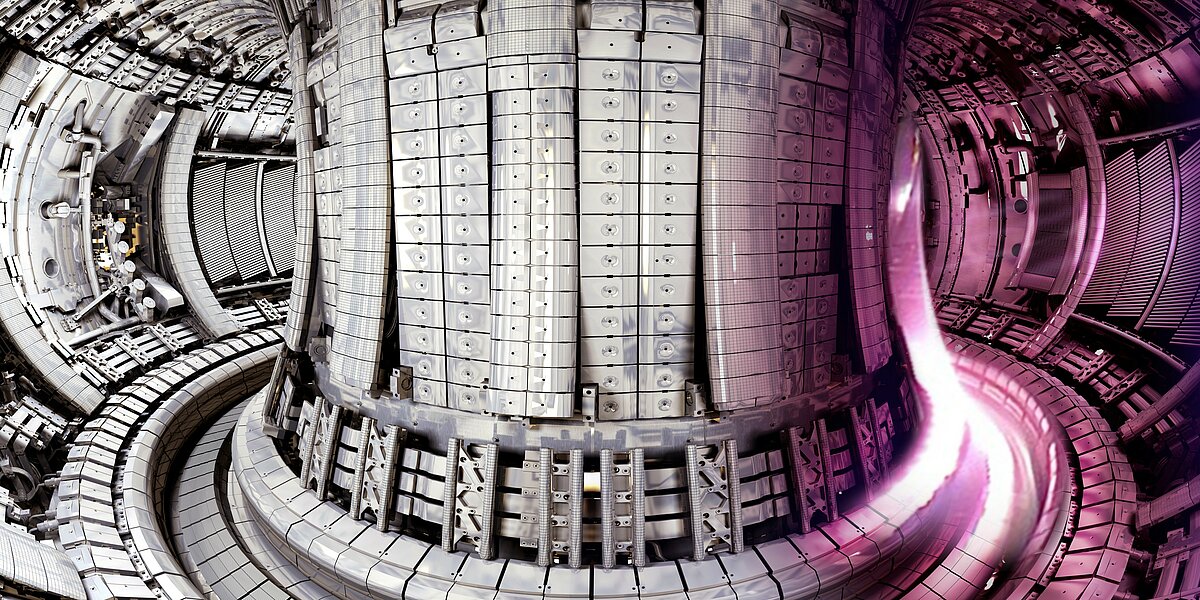
The Joint European Torus (JET), one of the world’s largest and most powerful fusion machines, has demonstrated the ability to reliably generate fusion energy, whilst simultaneously setting a world-record in energy output.
These notable accomplishments represent a significant milestone in the field of fusion science and engineering.
In JET's final deuterium-tritium experiments (DTE3), high fusion power was consistently produced for 5 seconds, resulting in a ground-breaking record of 69 megajoules using a mere 0.2 milligrams of fuel.

JET is a tokamak, a design which uses powerful magnetic fields to confine a plasma in the shape of a doughnut. Most approaches to creating commercial fusion favour the use of two hydrogen variants – deuterium and tritium. When deuterium and tritium fuse together they produce helium and vast amounts of energy, a reaction that will form the basis of future fusion powerplants.
JET is in the Culham Centre for Fusion Energy, UK, housed experiment that is one of the key facilities of the European Fusion Research Program (EUROfusion).
EUROfusion is a consortium of 30 national fusion research institutes of the European Union, the United Kingdom, Switzerland and Ukraine. Institute of Solid State Physics, University of Latvia (ISSP UL) is also a part of this consortium, together with Institute of Chemical Physics of UL and Institute of Physics of UL, joining forces and creating the Latvian “Euro Fusion” laboratory.
Check out this video of the record plasma, pulse number 104522 at JET
Watch press event here